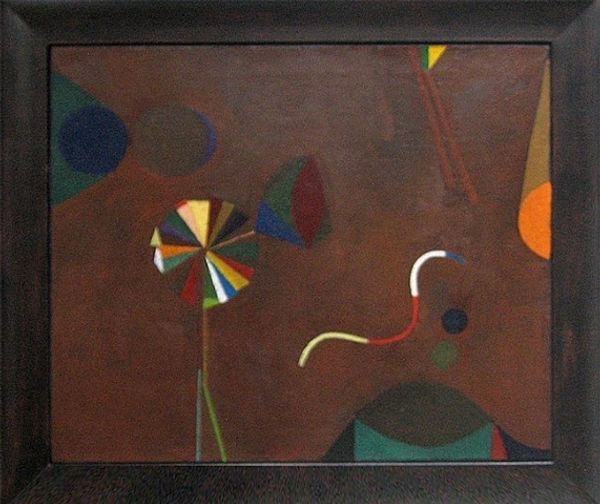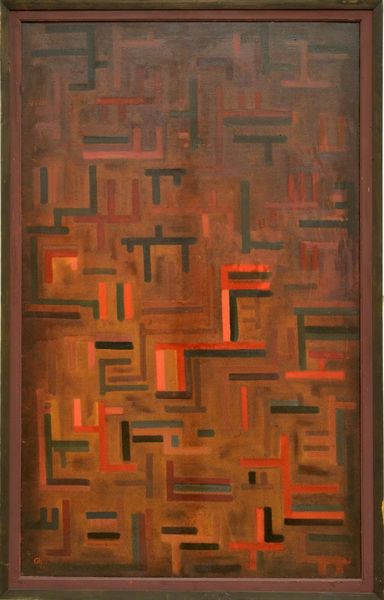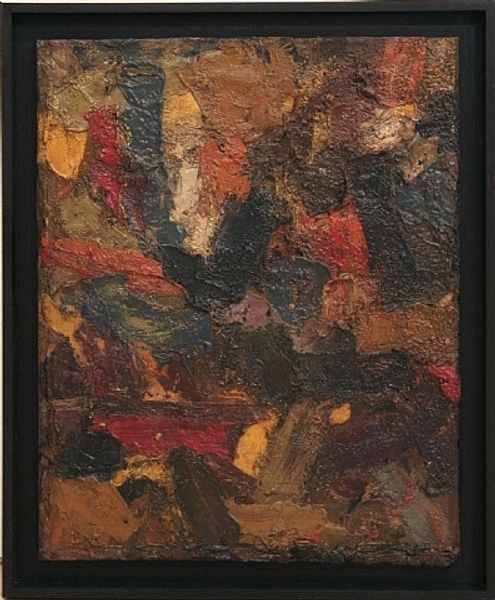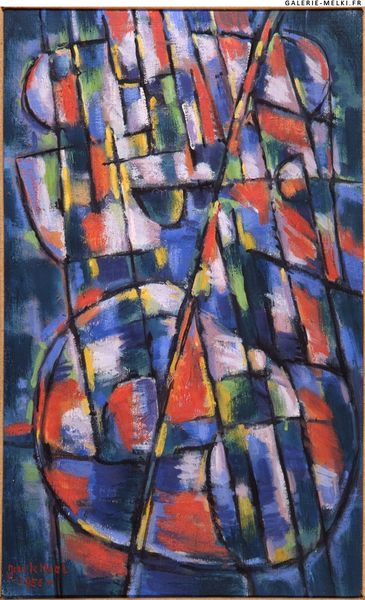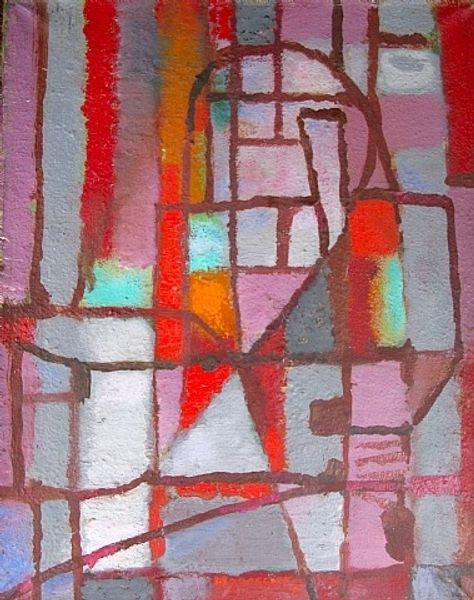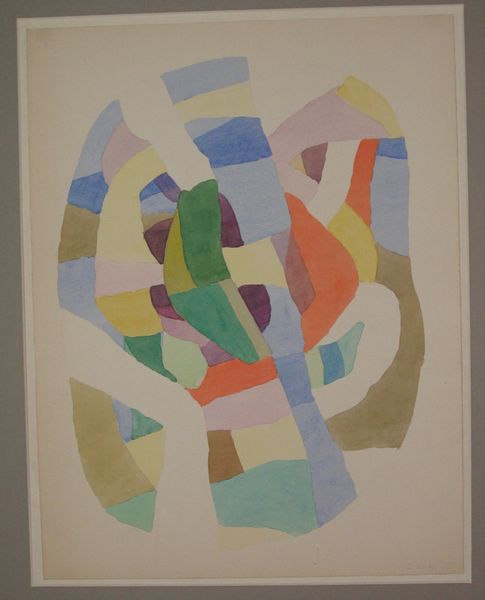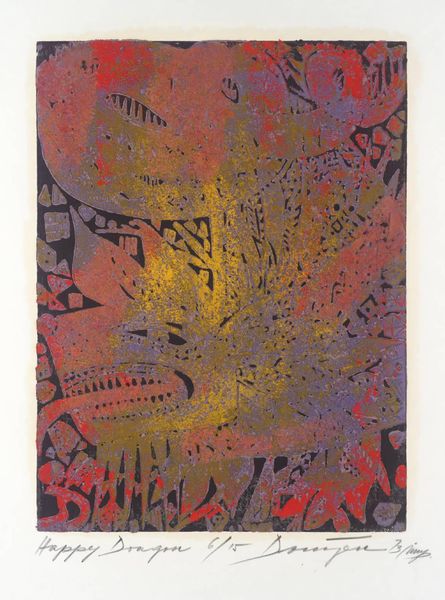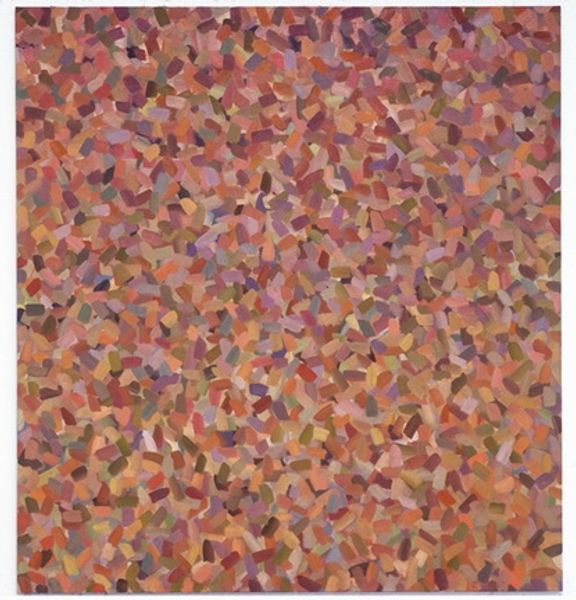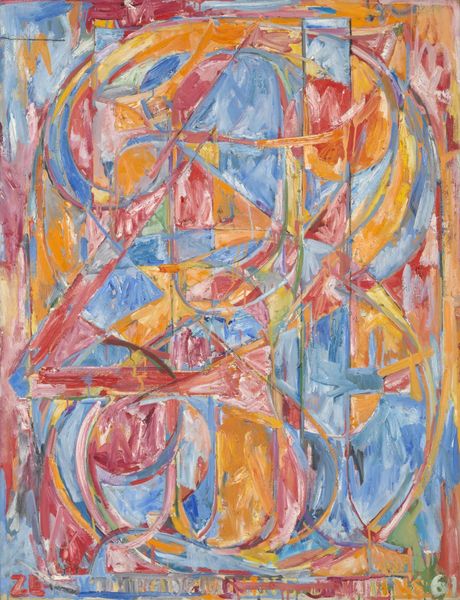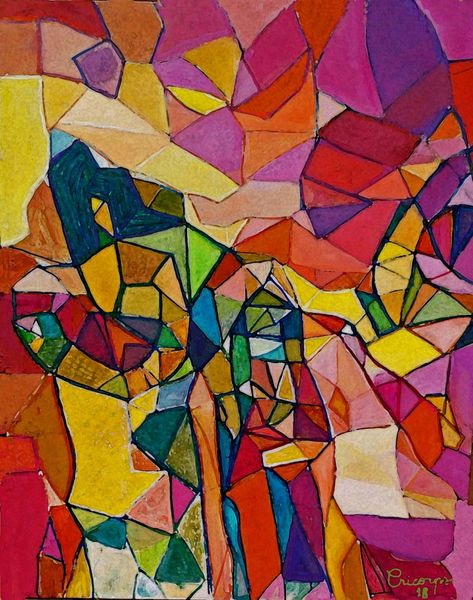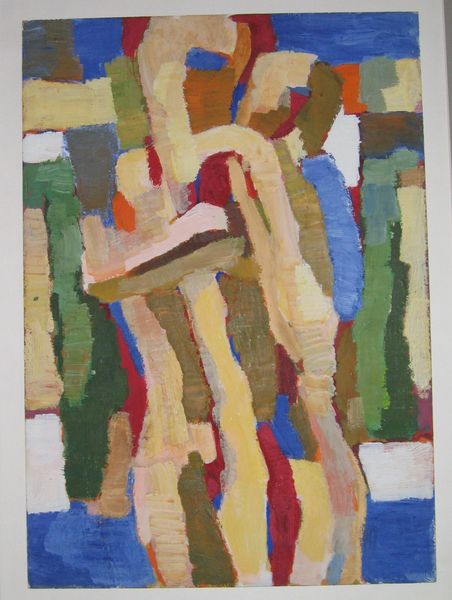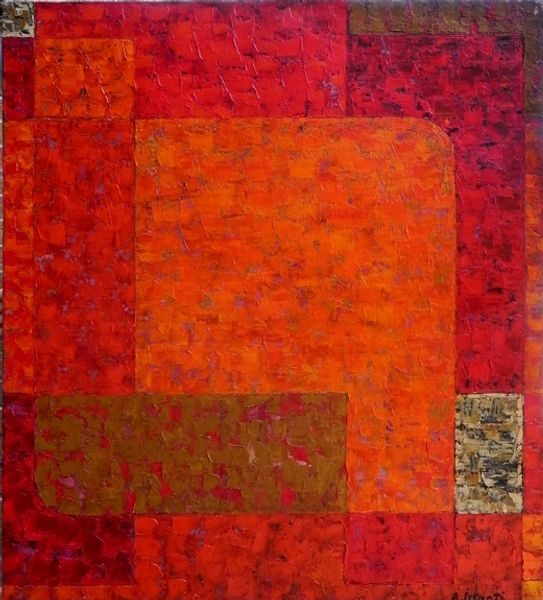
matter-painting, painting, acrylic-paint, impasto
#
abstract-expressionism
#
abstract expressionism
#
abstract painting
#
matter-painting
#
painting
#
acrylic-paint
#
form
#
geometric pattern
#
impasto
#
abstract pattern
#
organic pattern
#
geometric
#
geometric-abstraction
#
abstraction
#
modernism
Copyright: Alexandre Istrati,Fair Use
Curator: Alexandre Istrati's "Composition orange," dating from 1951, immediately strikes me with its vibrant energy. It's almost overwhelming at first glance. Editor: The energetic visual effect you're describing seems quite intentional. Observe the texture created by the heavy impasto of acrylic paint; it’s anything but flat, full of implied movement. This is definitely in the matter-painting trend of the time. Curator: You’re right to point that out. That tactile quality almost turns the painting into a sculptural object. However, beyond its materiality, what strikes me is how the geometric shapes create such tension against that textural, seemingly chaotic background. Editor: It's a controlled chaos, I think. Artists like Istrati embraced abstraction after the Second World War as a rejection of traditional, representational forms that they often associated with outdated social structures or even specific nationalistic ideologies. The freedom of form becomes, in a sense, a metaphor. Curator: That socio-political reading provides an interesting counterpoint to how I view it. I find myself much more interested in the relationships between these forms and the use of colour – particularly, how the intermingling shades of orange serve to disrupt easy categorization of foreground and background. The eye jumps from one point to another. Editor: And let's not ignore that the piece's title points us directly to an exploration of chromatic interplay, deliberately highlighting what may be its most potent attribute. In terms of public reception, an emphasis on purely formal values surely allowed abstract works like these to become increasingly popular, gaining legitimacy via major museum holdings throughout Europe and North America. Curator: The art market and exhibition spaces certainly validate such styles. But doesn't this kind of pure formalism risk overlooking any potentially deeper meaning residing within the artwork itself, reducing it to only line, color, shape and texture? Editor: Not at all, formal analysis lets the pure, inherent qualities speak directly. "Composition orange" represents Istrati’s participation to this artistic environment where material exploration meets geometric freedom. Its success lies within its balanced disharmony. Curator: Perhaps in this vibrant disharmony, both readings -the political and the formal-find a strange point of intersection. Thank you for bringing new shades to my consideration of "Composition orange".
Comments
No comments
Be the first to comment and join the conversation on the ultimate creative platform.
